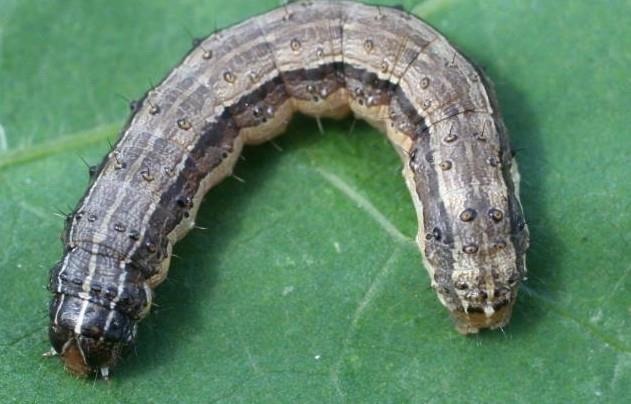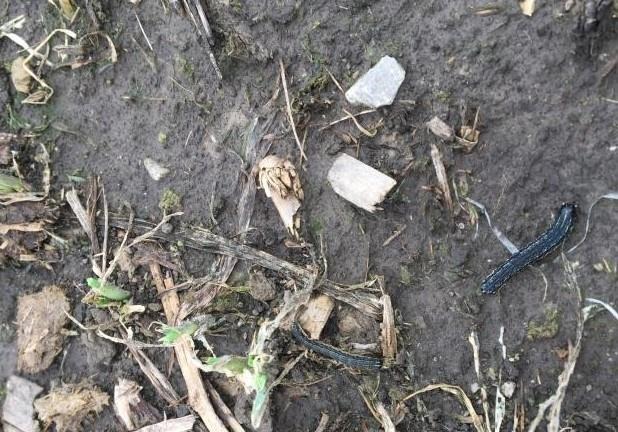By Erin Hodgson and Ashley Dean
Fall armyworm is native to tropical regions in the western hemisphere. It can only successfully overwinter in the southern US (Texas and Florida), but the adults are strong flyers and capable of long-distance migration to northern states. Multiple migration events are possible each summer, and adults can be found in Iowa from June to August. This year, they are more abundant in the Midwest than usual and are causing late-season issues. As the common name suggests, larvae can still be active in October. Droughty conditions favor their development.
A generation takes about 30 days to complete its life cycle in the summer, and we assume several generations are possible in Iowa. Eggs are usually laid in a mass of 100-200 on light-colored surfaces, including fence posts, poles or tree limbs. The eggs often look moldy or fuzzy because they are covered with grey scales. Eggs hatch within four days and larvae (caterpillars) go through six instars before pupation. Young larvae are greenish with a dark head and older larvae are mottled with red and brown. White lines along the top of the body develop along with raised spots and spines. You can distinguish fall armyworm from other armyworm species by the white, inverted “Y” on the face and four raised bumps in the shape of a square near the end of the abdomen.

Fall armyworm – note Y on face and four raised bumps in the shape of a square near the end of the abdomen.
Larvae have a wide host range of at least 80 plants, but prefer grasses (corn, sorghum, bermudagrass, tall fescue). They can also feed on alfalfa, barley, oats, ryegrass, vegetables and soybean. Armyworms tend to move quickly into new areas in large numbers. Injury caused by feeding is mainly defoliation, sometimes leaving main stems behind. Older larvae can cause extensive injury, especially to young plants, and can destroy the growing point. Injury is ragged and looks like hail damage. Fall-seeded grasses can be severely impacted; larval feeding can cause plant stunting or death.

Fall armyworms and defoliation of a cover crop.
Scouting for fall armyworm should occur during the early morning or late in the day, since this is when larvae are most active. Start in the most valuable crops first. The best way to confirm the presence of fall armyworm in pastures or hayfields is to use a sweep net. The net will pick up larvae that are too small to find other ways. If you find fall armyworm larvae in the sweep net, determine how many caterpillars are present per square foot by looking on plants and in the litter on the soil. If you don’t have a sweep net, check areas that look dead, wilting or drought-stressed, or where birds are congregating. Sometimes, you can find the frass (insect excrement), which are green pellets. The generic threshold is 2 or 3 caterpillars per square foot.
Management is based on the intended use of the crop/pasture. If the threshold is met or exceeded, consider cutting the field; baling the hay quickly will ensure the caterpillars won’t continue to feed. If the plants are used as ground cover, it may not be necessary (or profitable) to spray a foliar insecticide. However, if an application is warranted, timing is critical for effective larval suppression. Insecticide applications for control of fall armyworm larvae are most effective when the caterpillars are small (less than ½ inch long) and when made late while fall armyworms are actively feeding. Pyrethroids are typically a good option, but other states have noted minimal efficacy in some fields. Use high volume and pressure to create small droplets that ensure contact with the larvae. Continue to scout for migrating larvae until frost.
Source : iastate.edu